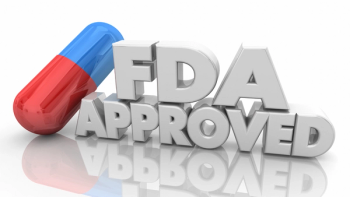What the Most Favored Nation Executive Order Means to Pharma Brands and Future Implications
Key Takeaways
- The MFN executive order introduces uncertainty in pharma pricing strategies, necessitating careful risk assessment and mitigation planning for product launches.
- Companies should evaluate product-specific risks, including price drops, non-pricing risks, and potential MFN spillover from competitors.
EVERSANA’s Alan Crowther discusses how pharma can prepare for the impact of the order.
President Trump’s MFN executive order has sent shockwaves through the pharma industry. It’s still unclear what impact it will have and how exactly it will be enforced, but it’s sure to make waves. Alan Crowther of EVERSANA spoke with Pharmaceutical Executive about the order and how the industry can brace for it.
How should pharma companies prepare for the MFN order?
Pharmaceutical Executive: Can you share what the most recent directive on Most Favored Nations (MFN) means to pricing strategies and what pharma brands should know?
Alan Crowther: As a quick refresher, the latest directive was a letter to 17 leading pharmaceutical firms. As with the Trump administration’s initial Executive Order (EO), this is non-binding and urges these companies to work with the Health & Human Services to implement Most Favored Nation (MFN) pricing, this time in the Medicaid channel. As with the first EO on May 12th, the letter’s language is strong, its ultimate policy mechanism and manner of implementation is ambiguous, and it has a deadline––in this case, 60 days.
Brand teams should know that the letter mostly references MFN pricing in the Medicaid channel, which is less impactful than “full MFN” for three reasons. Medicaid represents less than 10% of pharmaceutical spend at $51 billion, rebates in this channel are over 50%, and the chance of spillover to other pricing channels is reduced.
If the administration stays focused on Medicaid for MFN for in-line products, especially if combined with 340B reform, then this is likely a threat to innovation that a broad MFN policy represents. While Trump is known for unpredictability in negotiations, one interpretation is that this directive signals both a very serious desire for drug pricing as a priority issue - but also a willingness to negotiate.
PE: Do brand teams need to look at their individual product risk the same way?
Crowther: Brand teams need to understand that not all products are equal under MFN, and not just because of different price drops. This makes the importance of clearly understanding what a product’s risk profile looks like even more important. Be sure to answer questions such as:
- Will your product have a smaller or larger drop from US to ex-US? This dictates what the risk mitigation target may be.
- Do you have non-pricing risk, e.g., do you manufacture ex-US? Beware of tariffs used to push MFN pricing.
- Is your product a PBM managed product that can benefit from Direct-to-Patient (DTP) model? MFN dynamics may give you more options.
- Will a competitor to your product be subject to IRA price negotiations, which represents a possible MFN pricing scenario? Watch out for MFN spillover from a competitor in IRA negotiations.
With an accurate understanding of your product profile, you can look at your global launch plan next.
PE: If a firm is looking to launch in Europe or the rest of the world right now, should it delay based on the MFN executive order?
Crowther: To launch or not to launch, that is the question! Essentially, you have three options:
- Skip developed markets until hopefully there is clarity, which could take years if courts get involved
- Launch fully exposed to MFN
- Delay launch until you have a complete mitigation plan
Under the first option, to delay until you have clarity, this could take years, making it likely not a viable or ideal option unless the (1) risk profile of the drug is very high, e.g. 90% drop US to ex-US, (2) mitigation prospects are poor, and (3) it is an existential risk to the company. Most launches are not in this situation, but if this applies to your organization, clarity delays could impact both revenue and ultimately patients.
The second option, launching exposed without a risk mitigation plan, though, is like buying a home without insurance in a fire zone. The stakes are too high to gamble with a possible massive hit to US pricing. Even if the administration never gets Congress to pass MFN legislation that applies MFN to all products––and we heard some DC insiders doubt that this will happen––the administration has other levers to push MFN for a subset of therapies. The risk will be real for some number of drugs.
So if the delay for clarity is unattractive in many cases and ignoring MFN is too risky, especially for some products, then you are left with primarily the third and strongest option––launch after risk mitigation planning.
PE: What does a good launch risk mitigation plan look like?
Crowther: A good risk mitigation plan pulls in multiple stakeholders, primarily a core team from legal, government affairs and U.S. and Global Price & Market Access, but can also include trade, distribution and manufacturing experts for selected risks. A strong plan needs to address multiple risks, including the core pricing risk, non-pricing risk, and it needs to include how risk shifts over time.
For the core pricing risk, firms must launch without knowing the exact shape of future pricing regulations that may come. Teams should map out multiple MFN scenarios, like which price types might be used, and use that to pressure test plans appropriately.
Plans should look at combinations of label and indication restrictions at launch, alternate launch sequences, and lists of markets that may make sense to skip. Other considerations include alternate access pathways like named patient programs and early access structures. Key questions that should be discussed at this phase include:
- Should you launch with a restricted label at a higher price in a high-risk market and expand later or skip that market entirely?
- Do retail pharmacy products offer a viable direct-to-patient path that provide a low price for MFN?
- Should innovative agreement types like outcomes-based contracting be reconsidered in light of MFN?
- Is MFN primarily a government channel risk for now or is there is a high probability of “spillover” to the commercial channel?
Again here, it’s important that these scenarios be mapped out well to ensure organizations are prepared for wherever the cards may fall.
PE: You also mentioned risks over time; can you elaborate on those?
Crowther: Time can work for or against organizations based on risks, so strategy must take a multi-year view. Even if a launch is planned at a parity MFN price, the natural questions is will it stay at parity? In the US, prices increase, and in many OECD markets, prices drop over time. A product launched at parity could have a 50% differential after 5-7 years. Price is not the only variable that changes with time. The administration is focused on OECD markets with 60% of US GDP––but that list is not static. A new country could appear in the MFN basket in two years that you didn’t anticipate, or a country on the bubble, for example like Japan, could drop.
Time also works for a product if launched on a limited basis in some markets in a way that does not incur MFN risk––thus delaying full launch until more clarity exists.
Finally, MFN clauses exist in many kinds of contracting in many industries––and, unmanaged, embed a liability time bomb in your financials. What if, in five years, a firm is audited for MFN compliance and there is ambiguity in contract language or does a firm shifts its pricing strategy?
It sounds like a lot, but a firm can develop an effective plan in 30-to-60 days for most products with an immediate to near-term launch window. Organizations have plenty of time to address drugs in the pipeline.
PE: For drugs in pipeline, should firms be adjusting US pricing expectations or global pricing expectations––or both?
Crowther: Some adjustment certainly should be considered but be cautious to not over-discount and lose out or avoid promising drugs or assets. Companies should strongly consider either some small adjustments to risk-adjusted NPV models or a multi-scenario model (high-medium-low) that allows for a lower bound on the worst-case scenario for potentially lower US prices and/or reduced revenue ex-US in the OECD markets. If organizations have built good models in launch plans, teams will have a good sense of what that adjustment looks like.
This may be an optimistic take, but if the industry reaches common ground with this administration across Medicaid, 340B, direct-to-patient, and a modified, less severe approach to MFN, many stakeholders will win. It could benefit Medicaid budgets, benefit taxpayers funding these programs, industry with reduced 340B abuse, innovation by protecting value and investment in research and development, and ultimately give the administration win on their desire to see some version of MFN realized.
However, it’s still early in this process, and until more certainty emerges, risk management is key, especially with new launches.
Newsletter
Lead with insight with the Pharmaceutical Executive newsletter, featuring strategic analysis, leadership trends, and market intelligence for biopharma decision-makers.





